|
Books Should Be Free Loyal Books Free Public Domain Audiobooks & eBook Downloads |
|
|
Books Should Be Free Loyal Books Free Public Domain Audiobooks & eBook Downloads |
|
Animal Books |
|---|
|
Book type:
Sort by:
View by:
|
By: Thornton W. Burgess (1874-1965) | |
|---|---|
 Old Granny Fox
Old Granny Fox
Old Granny Fox and grandson Reddy Fox must use all their cunning to hunt up enough food to survive the long winter. Food in the Green Meadow is scarce but Farmer Brown's hens are locked up tight and protected by Bowser the Hound, so Granny takes a conceited Reddy hunting and teaches him some surprising new tricks to lure in their dinner. Old Granny and Reddy Fox encounter danger and adventure in their quests to keep their bellies full, including a close encounter with Farmer Brown's boy, a clever plot to steal Bowser's food, and an unforeseen thief who might outsmart this sneaky pair. | |
 Adventures of Poor Mrs. Quack
Adventures of Poor Mrs. Quack
"Hello, Jerry Muskrat! We'd forgotten all about you," said Mrs. Quack. "What was that you said?" Jerry good-naturedly repeated what he had said. Mrs. Quack's face brightened. "Do you really mean it?" she asked eagerly. "Do you really mean that you know of a pond where we could live and not be likely to be seen by these two-legged creatures called men?" "That's what I said," replied Jerry briefly. "Oh, Jerry, you're not joking, are you? Tell me you're not joking," begged Mrs. Quack. "Of course I'm not joking," returned Jerry just a little bit indignantly, "I am not the kind of a fellow to joke people who are in such trouble as you and Mr. Quack seem to be in." | |
 Blacky the Crow
Blacky the Crow
Blacky the Crow is a clever rascal who lives in the Green Forest and Meadow. He loves to play tricks on the other little people who are his neighbours, and is curious about Farmer Brown’s Boy. Blacky is always thinking about what is right and what is wrong, but he still gets into all kinds of mischief. | |
 Bowser the Hound
Bowser the Hound
Old Man Coyote craftily leads Bowser the hound away from home, and Bowser gets lost. Will Bowser find his way back to Farmer Brown's? Will Reddy Fox finally catch himself a chicken, now that Bowser is no longer guarding the henhouse? This is one of many delightful books by the naturalist Thornton W. Burgess, who wrote children's stories featuring the animals of the Green Forest and the Green Meadows. | |
 Happy Jack
Happy Jack
The adventures and perils of Happy Jack the Squirrel in the Green Forest, co-starring Happy Jack's cousins Chatterer the Red Squirrel and Striped Chipmunk, friends Sammy Jay, Tommy Tit, Whitefoot the Wood Mouse, and Shadow the Weasel as Happy Jack's enemy. | |
By: Sir Percy Fitzpatrick (1862-1931) | |
|---|---|
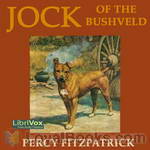 Jock of the Bushveld
Jock of the Bushveld
Jock of the Bushveld is a true story by South African author Sir Percy Fitzpatrick when he worked as a storeman, prospector's assistant, journalist and ox-wagon transport-rider. The book tells of Fitzpatrick's travels with his dog, Jock, during the 1880s. Jock was saved by Fitzpatrick from being drowned in a bucket for being the runt of the litter. Jock was very loyal towards Percy, and brave. Jock was an English Staffordshire Bull Terrier. | |
By: Katharine Elizabeth Dopp (1863-1944) | |
|---|---|
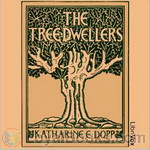 The Tree-Dwellers
The Tree-Dwellers
Katharine E. Dopp was well-known as a teacher and writer of children’s textbooks at the turn of the 20th Century. She was among the first educators to encourage the incorporation of physical and practical activity into the elementary school curriculum at a time when such activities were becoming less commonplace in a child’s home environment. The Tree-Dwellers – The Age of Fear is the first in a series of elementary school texts written by Ms. Dopp that focus on the anthropological development of early human groups... | |
By: Pliny the Elder | |
|---|---|
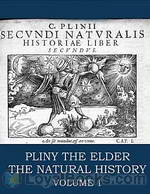 The Natural History
The Natural History
"Naturalis Historia" (Latin for "Natural History") is an encyclopedia published circa AD 77-79 by Pliny the Elder. It is one of the largest single works to have survived from the Roman empire to the modern day and purports to cover the entire field of ancient knowledge, based on the best authorities available to Pliny. The work became a model for all later encyclopedias in terms of the breadth of subject matter examined, the need to reference original authors, and a comprehensive index list of the contents... | |
By: Richard Barnum | |
|---|---|
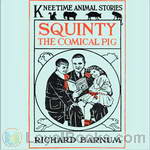 Squinty the Comical Pig
Squinty the Comical Pig
"This comical children's tale about the funny adventures of a funny pig written by an unknown author. The publisher has hired authors to write children's tales, and gave them "house names". The "name" of the author who wrote this tale is Richard Barnum. It became very successful, the most well known of Richard Barnum's tales. So, if you want to laugh a little, even if you are not a child, read this book". | |
By: Emerson Hough (1857-1923) | |
|---|---|
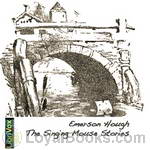 The Singing Mouse Stories
The Singing Mouse Stories
The singing mouse tells tales of nature in songs. This book is for those who want to know how the mountains ate up the plains, what the waters said or where the city went. | |
By: Oliver Herford (1863-1935) | |
|---|---|
 Kitten's Garden of Verses
Kitten's Garden of Verses
The Kitten's Garden of Verses is a book of short poetry, modeled after Robert Louis Stevenson's A Child's Garden of Verses. Of course, the poems in this book are intended for kittens rather than children! | |
By: Howard R. Garis (1873-1962) | |
|---|---|
 Uncle Wiggily's Adventures
Uncle Wiggily's Adventures
Due to Uncle Wiggily's rheumatism being so very bad, Dr. Possum prescribes a journey to help him move around, have a change of air, and a good long bout of traveling to get more exercise. So Uncle Wiggily packs his valise and sets forth! | |
 Uncle Wiggily in the Woods
Uncle Wiggily in the Woods
Howard Garis, one of the most prolific children's writers of the 20th century, is credited with writing over 1500 Uncle Wiggily stories. In this collection, the loveable old rabbit stays close to home and visits woodland friends. | |
 Uncle Wiggily and Old Mother Hubbard
Uncle Wiggily and Old Mother Hubbard
Uncle Wiggily Longears, an old bunny gentleman now stricken with rheumatism and getting around with a cane, still is quite active. In these stories, he encounters a string of characters from Mother Goose's tales and has adventures that are not quite in keeping with her books!These gentle tales are 7 - 8 minutes each and quite suited to a nightly reading to a small child. (Intro by Mark F. Smith) | |
 Uncle Wiggily's Travels
Uncle Wiggily's Travels
This is the second of 79 Uncle Wiggily books published and contains another selection of bedtime stories from those originally published in the Newark Evening News every day except Saturday for over 40 years. Uncle Wiggily Longears is a loveable rabbit who suffers from rheumatism and has many woodland friends and innocent adventures. | |
 Lulu, Alice and Jimmie Wibblewobble
Lulu, Alice and Jimmie Wibblewobble
The Wibblewobble family of ducks appear in a series of 31 bedtime stories - one for each day of the month - written by Howard R. Garis. Each story is an adventure featuring the ducks and their neighbors, including Uncle Wiggily Longears, the famous old gentleman rabbit with rheumatism. | |
 Curly and Floppy Twistytail (The Funny Piggie Boys)
Curly and Floppy Twistytail (The Funny Piggie Boys)
The adventures of two little pig boys and their mom and dad. "Once upon a time, not so very many years ago, in the days when there were fairies and giants and all things like that, there lived in a little house, on the edge of a wood, a family of pigs. Now these pigs weren't like the pigs, which perhaps you children have seen on most farms. No, indeed! They were just the nicest cleanest, sweetest pigs you ever dreamed of—not that pigs on a farm can't be clean, if they want to, but, somehow or other, no one seems to have time to see that they are clean." | |
 Umboo, The Elephant
Umboo, The Elephant
Have you ever wondered what it is like to be in a circus? What if, rather than choosing to be in one, you were captured and taken away from the home and family you knew and made to perform in the heat of a big top? Meet Umboo, the elephant, Chako, the monkey, Snarlie, the tiger and their circus friends and learn how life in the jungle was different from life in the circus. | |
By: Bradford Torrey (1843-1912) | |
|---|---|
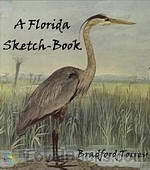 A Florida Sketch-Book
A Florida Sketch-Book
This is a series of late-19th Century essays about Florida’s flora & fauna written by a Massachusetts-based naturalist. | |
By: Hans Aanrud (1863-1953) | |
|---|---|
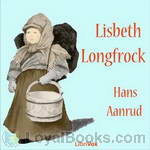 Lisbeth Longfrock or Sidsel Sidsærkin
Lisbeth Longfrock or Sidsel Sidsærkin
Lisbeth Longfrock - (Sidsel Sidsærkin in its original Norwegian) was seen by the author as a book written for adults, telling the story of a young girl growing up in a farming district in a steep-sided Norwegian Valley. It was first written when the author's daughter was 8 years old, the age of Lisbeth when the book begins, so she would know about his childhood spent in similar surroundings, living on a farm and spending summer in charge of the cows and goats on the mountain pastures. | |
By: Mary Hunter Austin (1868-1934) | |
|---|---|
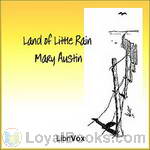 The Land of Little Rain
The Land of Little Rain
The Land of Little Rain is a book of sketches which portray the high desert country of southern California, where the Sierras descend into the Mojave Desert. Mary Austin finds beauty in the harsh landscape: "This is the sense of the desert hills--that there is room enough and time enough. . . The treeless spaces uncramp the soul." Her story begins with the water trails that lead toward the few life giving springs--the way marked for men by ancient Indian pictographs. Life and death play out at these springs... | |
By: Frances Trego Montgomery (1858-1925) | |
|---|---|
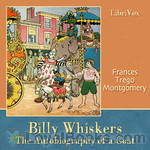 Billy Whiskers, the Autobiography of a Goat
Billy Whiskers, the Autobiography of a Goat
This delightful children's story can be enjoyed by kids and adults alike! A mischievous goat, Billy Whiskers, gets into trouble so often that the book could be named, "Billy Trouble Whiskers"! This humorous story will bring you many chuckles and give you a chance to get lost in Billy's adventures with childlike enthusiasm. From riding in a police car, to being a firehouse mascot, getting married, and finding himself a circus goat, Billy's adventures will certainly keep you entertained! (Introduction by Allyson Hester) | |
By: Jim Kjelgaard (1910-1959) | |
|---|---|
 The Black Fawn
The Black Fawn
Bud Sloan was an orphan who had been 'sold out' of the orphanage to work on a farm once he'd been old enough to labor. The farm where he was to work was owned by an aging farmer and his wife who had raised a large family and were now left alone. One day, after his chores were done, Bud wandered into the woods nearby and with mouth agape, he noticed a newborn jet black fawn all alone and apparently confused in his new surroundings. Bud resolved that day that this baby fawn was just like himself, an orphan, and would be bound to him in spirit... | |
By: Laura E. Richards (1850-1943) | |
|---|---|
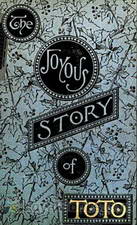 Joyous Story of Toto
Joyous Story of Toto
Toto and his grandmother become friends with many of the Forest Folk (such as Bruin, Racoon, Woodchuck, and Cracker the Squirrel) in this first Toto book. | |
By: Harrison Weir (1824-1906) | |
|---|---|
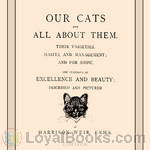 Our Cats and All About Them
Our Cats and All About Them
The Englishman Harrison Weir organized the first cat show in England in 1871. In 1887 he founded the National Cat Club and was its first President and Show Manager until his resignation in 1890.Our Cats and all about them is concerned with cats and all about them. It describes numerous breeds of cats and what to look for in a cat show champion, and deals with the general management and common diseases of cats, as well as how to raise healthy kittens. But there is also a hodge podge of cat related stories, games, nursery rhymes, superstitions, as well as a list of cat lovers and a chapter of "The Cat in Shakespeare". | |
By: Ike Matthews | |
|---|---|
 Full Revelations of a Professional Rat-catcher
Full Revelations of a Professional Rat-catcher
Full Revelations of a Professional Rat-Catcher, after 25 Years' ExperienceBy Ike Matthews. INTRODUCTION. In placing before my readers in the following pages the results of my twenty-five years' experience of Rat-catching, Ferreting, etc., I may say that I have always done my best to accomplish every task that I have undertaken, and I have in consequence received excellent testimonials from many corporations, railway companies, and merchants. I have not only made it my study to discover the different... | |
By: Florence Holbrook (1860-1932) | |
|---|---|
 Book of Nature Myths
Book of Nature Myths
This is a book of myths told by the Indians of North America to their children. They could be compared to present day Fairy Tales. | |
By: Marietta Holley (1836-1926) | |
|---|---|
 Poems
Poems
This is a collection of poems by Marietta Holley, better known as Josiah Allen's Wife. | |
By: Katharine Berry Judson (1866-1929) | |
|---|---|
 Myths and Legends of the Great Plains
Myths and Legends of the Great Plains
Myths and Legends of the Great Plains is a compendium of myths and legends from the Great Plains region of the US. It includes many short stories, and also quite a few songs and poems. Each tale is tagged with what culture it is from - | |
 Myths And Legends Of California And The Old Southwest
Myths And Legends Of California And The Old Southwest
"...The preparation of a volume of the quainter, purer myths, suitable for general reading, authentic, and with illustrations of the country portrayed, but with no pretensions to being a purely scientific piece of work.... This volume is intended for popular use." As with most mythologies or religions, these stories tell how the world came to be, how places and peoples got their names, how social customs and mores developed, adventures of the ancestors or gods, and much, much more. | |
By: Norman Lindsay (1879-1969) | |
|---|---|
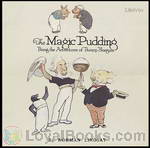 The Magic Pudding
The Magic Pudding
Bunyip Bluegum the koala sets out on his travels taking only a walking stick. At about lunchtime, feeling more than slightly peckish, he meets Bill Barnacle the sailor and Sam Sawnoff the penguin who are eating a pudding. The pudding is a magic one which, no matter how much you eat it, always reforms into a whole pudding again. He is called Albert, has thin arms and legs and is a bad-tempered, ill-mannered so-and-so into the bargain. His only pleasure is being eaten. The book is divided into four "slices" instead of chapters. (Introduction by Wikipedia) | |
By: Clara Dillingham Pierson (1868-1952) | |
|---|---|
 Among the Farmyard People
Among the Farmyard People
A wonderful children's book filled with engaging stories about various farmyard animals. Each book ending with a moral which gently encourages children towards better behaviour and attitudes. | |
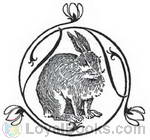 Among the Forest People
Among the Forest People
Another delightful children's book by Clara Dillingham Pierson about various forest animals - what they do, and what they are like. Each one also giving subtle moral and life lessons to young children. | |
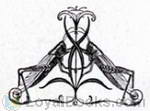 Among the Meadow People
Among the Meadow People
Lovely book of nature written for children by teacher and naturalist Clara Dillingham Pierson. This book in the "Among the People" series explores the animal inhabitants of the meadow and garden. The charming prose shrinks us down and puts us in the fascinating world of the tiny insects, amphibians, and birds who call the field their home. From the author's Introduction: "In selecting the tiny creatures of field and garden for the characters in this book, I have remembered with pleasure the way in... | |
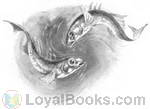 Among the Pond People
Among the Pond People
Lovely book for children written by teacher and naturalist Clara Dillingham Pierson. This book in the "Among the People" series explores the animal inhabitants of a pond. The beautiful writing brings the pond creatures into being in the reader's imagination and allows them a glimpse of the mysterious lives being carried out above and below the water's surface. | |
By: Alec John Dawson (1872-1951) | |
|---|---|
 Finn The Wolfhound
Finn The Wolfhound
Dawson published over thirty books, the one best remembered today probably being the animal adventure story Finn the Wolfhound (1908)…. His own dog Tynagh and her son Gareth, who was described as the largest and finest specimen of his breed to date, served as the models for Tara and Finn in Finn the Wolfhound (1908). This is probably Dawson’s best-remembered and certainly his most frequently reprinted work: Finn, a champion Irish Wolfhound, is taken from England to Australia where he undergoes a series of adventures, being exhibited as a wild animal in a circus and escaping to live in the outback before eventually finding his old master and saving his life. | |
By: Ella Rodman Church (1831-) | |
|---|---|
 Among the Trees at Elmridge
Among the Trees at Elmridge
"On that bright spring afternoon when three happy, interested children went off to the woods with their governess to take their first lesson in the study of wild flowers, they saw also some other things which made a fresh series of "Elmridge Talks," and these things were found among the trees of the roadside and forest." | |
By: R. Cadwallader Smith | |
|---|---|
 On The Seashore
On The Seashore
This gifted nature writer who is so good at describing animals and their habitat and habits here gives us a look at many of the fascinating creatures that can be found on the seashore. Starfish, the many types of crabs, shrimp, sea weed and finally something called the Precious Wentletrap which I will allow your imagination to think about for a while. His writing is clear and, as always, easy to read. Note that these are presented as educational 'lessons' on the various animals found near the sea and each lesson or chapter ends with a few questions called 'Exercises' which the student is asked to see if the main points of the chapter are retained... | |
By: Edward Jesse (1780-1868) | |
|---|---|
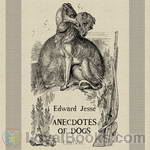 Anecdotes of Dogs
Anecdotes of Dogs
"Histories are more full of examples of the fidelity of dogs than of friends."The character, sensibilities, and intellectual faculties of animals have always been a favourite study, and they are, perhaps, more strongly developed in the dog than in any other quadruped, from the circumstance of his being the constant companion of man. I am aware how much has been written on this subject, but having accumulated many original and interesting anecdotes of this faithful animal, I have attempted to enlarge the general stock of information respecting it... | |
By: Ellen C. Babbitt (1872-) | |
|---|---|
 More Jataka Tales
More Jataka Tales
The continued success of the "Jataka Tales," as retold and published ten years ago, has led to this second and companion volume. Who that has read or told stories to children has not been lured on by the subtle flattery of their cry for "more"? The Jataka tales, regarded as historic in the Third Century B. C., are the oldest collection of folk-lore extant. They come down to us from that dim far-off time when our forebears told tales around the same hearth fire on the roof of the world. | |
By: Sarath Kumar Ghosh (1883-?) | |
|---|---|
 Wonders of the Jungle
Wonders of the Jungle
How do elephants drink? What is the Law of the Jungle at the water hole? How does an elephant baby learn to feed and learn to swim? How do they walk under water? In what order do buffaloes drink? How do buffaloes fight the tiger? These and other wild inhabitants of the Indian jungle such as pigs, wild dogs, deer, camels, bears and birds are discussed in lively stories to entertain but mainly educate children of school age. "One of the great thinkers of the world has said that all the sciences are embodied in natural history... | |
By: Elphinstone Dayrell (1869-1917) | |
|---|---|
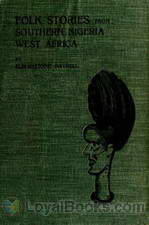 Folk Stories from Southern Nigeria, West Africa
Folk Stories from Southern Nigeria, West Africa
A collection of folk stories and fairy tales from Southern Nigeria gathered by Elphinstone Dayrell, deputy commissioner of the region when the book was published. - Summary by Elsie Selwyn | |
By: Dhan Gopal Mukerji (1890-1936) | |
|---|---|
 Kari the Elephant
Kari the Elephant
The adventures of an Indian boy and his beloved elephant. Born near Calcutta, Mukerji won the Newbury Medal for children's fiction. | |
By: Rosanna Eleanor Leprohon (1829-1879) | |
|---|---|
 Afternoon in July
Afternoon in July
LibriVox volunteers bring you 14 recordings of An Afternoon in July by Rosanna Eleanor Leprohon. This was the Fortnightly Poetry project for July 7, 2013.Rosanna Eleanor Leprohon, born Rosanna Eleanor Mullins, was a Canadian writer and poet. She was "one of the first English-Canadian writers to depict French Canada in a way that earned the praise of, and resulted in her novels being read by, both anglophone and francophone Canadians."Leprohon's novels were popular in both English and French Canada in the late 19th-century, and were still being reprinted in French in the mid-1920s... | |
By: C. W. Wolf (-1866) | |
|---|---|
 Apis Mellifica
Apis Mellifica
Wolf's essay considers the homeopathic medicine Apis Mellifica, or the poison of the honey bee, as a therapeutic agent based on his experience as a practicing physician. | |
By: Lenore Elizabeth Mulets (1873-?) | |
|---|---|
 Stories of Birds
Stories of Birds
This volume contains stories, poems, myths, and facts about lots of different birds, intended for teaching children. It is divided into nine parts, each covering a different type of bird. | |
By: Various | |
|---|---|
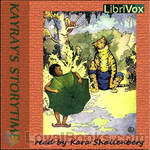 Kayray's Storytime
Kayray's Storytime
A collection of my favorite short children's stories and rhymes. | |
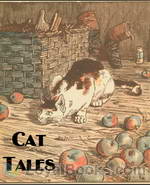 Cat Tales
Cat Tales
Cat Tales is the first of a series of kid-friendly collections of animal stories and non-fiction. There’ll be one or two grade-school-level texts on the animal, with eight-nine fiction works. Source for these is Project Gutenberg. | |
By: Unknown | |
|---|---|
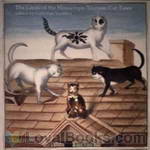 Lords of the Housetops: Thirteen Cat Tales
Lords of the Housetops: Thirteen Cat Tales
The Lords of the Housetops reveals the cat through the creative lenses of 13 authors. Consequently, this carefully chosen collection of stories is as complex, charismatic and clever as a cat. | |
By: Colette (1873-1954) | |
|---|---|
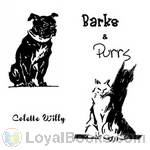 Barks and Purrs
Barks and Purrs
Barks and Purrs is a collection of seven episodes in the lives of Toby-Dog, a French Bulldog, and Kiki-the-Demure, a Maltese cat, living in a comfortable household. The episodes cover a hot afternoon, a train ride, and what happened when dinner was late or their mistress was ill. We hear about the first fire in autumn, a heavy storm, and about a visitor in the household.Sidonie-Gabrielle Colette-Willy was throughout her life a controversial French novelist. She published around 50 novels; the best known is “Gigi”. | |
By: Oliver Hartley | |
|---|---|
 Hunting Dogs
Hunting Dogs
The title of this book quotes its object. To tell something of night hunting, and especially to suggest how the ever necessary dog can best be selected, trained, maintained and utilized, is the consideration of first importance. To round out the subject all forms of hunting will receive some notice, and the various breeds of dogs will be so far dealt with, that their value and usefulness in their given fields may be determined. Best of all, the contents of this volume are based on the opinions and declarations of men who have had years of experience in the matters on which they presume to write.(Extracted from the Introduction) | |
By: Frances Trego Montgomery (1858-1925) | |
|---|---|
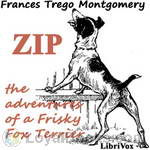 Zip, the Adventures of a Frisky Fox Terrier
Zip, the Adventures of a Frisky Fox Terrier
Zip, a little fox terrier, lives in the town of Maplewood in the house of his owner, Dr. Elsworth. Each day when Dr. Elsworth drives his carriage to visit his patients, Zip goes along with him so that he can keep the doctor company and, most importantly, visit with the other animals in the town. Zip likes to find out all the latest news so that he can tell it to his best friend, Tabby the cat, who also lives with Dr. Elsworth. However, he also finds himself getting into mischief, whether it's trying to solve a burglary, sneaking fried chicken from a picnic, getting stuck in a stovepipe or fighting with Peter-Kins the monkey. Zip is one dog who never has a dull day. | |
By: George W. Bateman | |
|---|---|
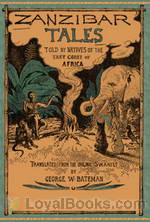 Zanzibar Tales
Zanzibar Tales
If you have read any accounts of adventure in Africa, you will know that travelers never mention animals of any kind that are gifted with the faculty of speech, or gazelles that are overseers for native princes, or hares that eat flesh. No, indeed; only the native-born know of these; and, judging by the immense and rapid strides civilization is making in those parts, it will not be long before such wonderful specimens of zoölogy will be as extinct as the ichthyosaurus, dinornis, and other poor creatures who never dreamed of the awful names that would be applied to them when they were too long dead to show their resentment... | |
By: Frank Linderman (1869-1938) | |
|---|---|
 Indian Why Stories: Sparks from War Eagle's Lodge-Fire
Indian Why Stories: Sparks from War Eagle's Lodge-Fire
Delightful fables, collected by a devotee of Indian lore, recounts many of the legends told to him by tribal members, among them intriguing explanations of "Why the Chipmunk's Back is Striped," "How the Otter Skin Became Great Medicine," "How the Man Found His Mate," and "Why Blackfeet Never Kill Mice." | |
By: Charles Godfrey Leland (1824-1903) | |
|---|---|
 Algonquin Legends of New England or Myths and Folk Lore of the Micmac, Passamaquoddy, and Penobscot Tribes
Algonquin Legends of New England or Myths and Folk Lore of the Micmac, Passamaquoddy, and Penobscot Tribes
This work, then, contains a collection of the myths, legends, and folk-lore of the principal Wabanaki, or Northeastern Algonquin, Indians; that is to say, of the Passamaquoddies and Penobscots of Maine, and of the Micmacs of New Brunswick. All of this material was gathered directly from Indian narrators, the greater part by myself, the rest by a few friends; in fact, I can give the name of the aboriginal authority for every tale except one. | |
By: Edith Howes (1872-1954) | |
|---|---|
 Sun's Babies
Sun's Babies
Charming stories and poems for young children about nature and the changes that occur with the seasons, weaving in life lessons throughout the stories. | |
By: Pliny the Elder (23-79) | |
|---|---|
 Natural History Volume 3
Natural History Volume 3
Naturalis Historia (Latin for "Natural History") is an encyclopedia published circa AD 77-79 by Pliny the Elder. It is one of the largest single works to have survived from the Roman empire to the modern day and purports to cover the entire field of ancient knowledge, based on the best authorities available to Pliny. The work became a model for all later encyclopedias in terms of the breadth of subject matter examined, the need to reference original authors, and a comprehensive index list of the contents... | |
By: Sarah E. Trueblood (1849-1918) | |
|---|---|
 Cats by the Way
Cats by the Way
Between these pages you will find only the good, old-fashioned, every-day cat. No Angora or thoroughbred has been entered here, unless it be "Hansie," who is little more than mentioned. These are true incidents and true lives, with the exception of the one chapter, "The Mission of the Cat." The reader will pardon the intrusion of Victor, the dog. I have added him as the cook adds her trace of spice, but feeling also that he is entirely in place, being an ardent cat-lover himself. | |
By: Svend Fleuron (1874-1966) | |
|---|---|
 Grim: The Story of a Pike
Grim: The Story of a Pike
"To devour others and to avoid being devoured oneself,that is life’s end and aim." This is the fascinating and exciting story of a girl pike named Grimm from her early life as an innocent fish to the wily and wise Pike she ultimately becomes. But many are the perils and dangers she must avoid to get there. Translated by John Muir. | |
By: Various | |
|---|---|
 Coffee Break Collection 008 - Animals
Coffee Break Collection 008 - Animals
This is the eighth collection of our "coffee break" series, involving public domain works that are between 3 and 15 minutes in length. These are great for work/study breaks, commutes, workouts, or any time you'd like to hear a whole story and only have a few minutes to devote to listening. This collection about animals includes tales and essays about the many creatures of land, sea, and air! | |
By: Howard R. Garis (1873-1962) | |
|---|---|
 Uncle Wiggily in Wonderland
Uncle Wiggily in Wonderland
Howard Garis, one of the most prolific children's writers of the 20th century, is credited with writing over 1500 Uncle Wiggily stories. In this collection, the loveable old rabbit visits other childhood friends from the "Alice In Wonderland" stories, once he discovers his rheumatism is not bothering him so much one day and he feels the need for adventure. | |
By: Irving Sydney Dix | |
|---|---|
 Comet and Other Verses
Comet and Other Verses
A few years ago, while recovering from an illness, I conceived the idea of writing some reminiscent lines on country life in the Wayne Highlands. And during the interval of a few days I produced some five hundred couplets,—a few good, some bad and many indifferent—and such speed would of necessity invite the indifferent. A portion of these lines were published in 1907. However, I had hoped to revise and republish them, with additions of the same type, at a later date as a souvenir volume of verses for those who spend the summer months among these hills—as well as for the home-fast inhabitants... | |
By: Catherine Cate Coblentz (1897-1951) | |
|---|---|
 Blue Cat of Castle Town
Blue Cat of Castle Town
"The mother cat had been quite upset when she first saw the blue kitten. She had looked fearfully then toward the river. For, like all cats, she had heard that a blue kitten could learn the river's song. Any kitten has a hard enough time to find a home for himself. For every kitten must find a hearth to fit his song. But a kitten who listens to the river and learns the river's song has the hardest time of all. Not only must the kitten who sings the river's song find a hearth to fit that song, but he must teach the keeper of that hearth to sing the same song. The river's song is very old. And mortals who have ears to hear and hearts to sing are fewer than few." | |
By: W. Gordon Stables (1840-1910) | |
|---|---|
 Cats: Their Points and Characteristics, with Curiosities of Cat Life, and a Chapter on Feline Ailments
Cats: Their Points and Characteristics, with Curiosities of Cat Life, and a Chapter on Feline Ailments
How true is the old saw: "Dogs have families, but cats have staff"? Cats have been favorite domestic pets for thousands of years. This is a study of their history, characteristics and suitability as pets, together with some charming cat tales. A must-read for cat lovers of all ages. | |
By: Ed Clark | |
|---|---|
 Constructive Beekeeping
Constructive Beekeeping
The author explores the effects of condensation and evaporation as they relate to the success of a beehive. The results of various experiments and the author's thoughts are given. | |
By: Philip M. Rule | |
|---|---|
 Cat: Its Natural History, Varieties and Management
Cat: Its Natural History, Varieties and Management
"The origin of the domestic cat (Felis domestica) is a subject about which there has been much conjecture and scientific discussion, but without any positive issue. Very long before the cat was kept in this country as a domesticated animal it was possessed by the ancient Egyptians in a tame state, and was, moreover, held in reverence by that remarkable and superstitious people, being regarded sacred to the goddess Pasht. As the domestic cat in different parts of the world will breed occasionally with the wild races of the locality, and as cats are conveyed from country to country, it is probable that our cats are of somewhat compound pedigree... | |
By: Charles Henry Ross (1835-1897) | |
|---|---|
 Book of Cats
Book of Cats
One day, ever so long ago, it struck me that I should like to try and write a book about Cats. I mentioned the idea to some of my friends: the first burst out laughing at the end of my opening sentence, so I refrained from entering into further details. The second said there were a hundred books about Cats already. The third said, “Nobody would read it,” and added, “Besides, what do you know of the subject?” and before I had time to begin to tell him, said he expected it was very little. “Why not Dogs?” asked one friend of mine, hitting upon the notion as though by inspiration... | |
By: E. Boyd Smith (1860-1943) | |
|---|---|
 Selected Works of E. Boyd Smith
Selected Works of E. Boyd Smith
A sampling of the children's books written and illustrated by E. Boyd Smith. The first story is Mr. Smith's version of the Story of Noah's Ark. He then tells us the story of Pocahontas and Captain John Smith. Next we join a hen as she hatches her chicks and their life on the farm. We then go on several adventures with Bob and Betty as they visit their Uncle's farm, go to the seashore and learn about ships, and then learn about railroads and trains. Our last story is a brief history of the United States up until the time just after World War I. | |
By: Clara Dillingham Pierson (1868-1952) | |
|---|---|
 Dooryard Stories
Dooryard Stories
A collections of stories about the animals around our houses, the birds, the cats, and even the bugs! Written in a humorous and very interesting style, the animals sound almost human, and you can learn along with them. You'll learn what happens to a hog caterpillar when he does not take advice, how a a young bird took a nasty fall because he didn't obey his parents, and how happy it made some robins when they helped their parents care for their younger siblings that came so close behind the first ones. Lots of other stories too about the animal's lives, make you realize that the animals in your dooryard may be more interesting than you think! | |
By: James Campbell | |
|---|---|
 Treatise of Modern Falconry
Treatise of Modern Falconry
The 18th century book A Treatise on Modern Falconry is still one of the most quoted books in today's falconry community. The preface was possibly written by a Rev. A. Willis, ridicules "The Origin and Progress of Language," a publication shortly before his writing this book. The introduction to this book gives a historical account of the development of falconry from its beginnings long before the 9th century in the middle East to its apparent decline at the invention of the hunting gun. It also includes interesting facts about the practice of falconry in Persia and Hindostan, where falconry became (and in some parts of the Middle East still is) a sport and pastime of the upper classes... | |
By: Edmund Bert | |
|---|---|
 Bert's Treatise of Hawkes and Hawking
Bert's Treatise of Hawkes and Hawking
An approved Treatise of Hawkes and Hawking. Divided into three Bookes. The first teacheth, How to make a short-winged Hawke good, with good conditions. The second, How to reclaime a Hawke from any ill condition. The third teacheth. Cures for all knowne griefes and diseases. By Edmund Bert, Gentleman. The author, who lived at Collier Row, near Romford, Essex, details his method of training the Goshawk, in which he was very successful. He used to ride out of Essex into Sussex to hawk over the downs, where, he says, " I have killed for the most part of a moneth together with an intermewed goshawke eight, nine, or tenne Partridges in a day... | |
By: Clara Dillingham Pierson (1868-1952) | |
|---|---|
 Tales of a Poultry Farm
Tales of a Poultry Farm
Another interesting book by Clara Dillingham Pierson, this time focusing on the poultry you might have in your farmyard! The chickens, ducks, and turkeys get some new experiences as a new owner comes to the farm, and does some things that seem very odd to them. Learn along with the chickens about the new owner, and also some other things that are worse, like the awful hook worms that some young chickens experienced when they disobeyed their mom. This book is just as interesting as the others by this author, so enjoy living in the poultry yard for a while! | |
By: Judith Gautier (1845-1914) | |
|---|---|
 Memoirs of a White Elephant
Memoirs of a White Elephant
"We are told by writers of antiquity that elephants have written sentences in Greek, and that one of them was even known to speak. There is, therefore, nothing unreasonable in the supposition that the White Elephant of this history, the famous "Iravata" so celebrated throughout Asia, should have written his own memoirs. The story of his long existence—at times so glorious, and at other times so full of misfortune—in the kingdom of Siam, and the India of the Maharajahs and the English, is full of most curious and interesting adventure... | |
By: William Ruschenberger (1807-1895) | |
|---|---|
 Elements of Mammalogy
Elements of Mammalogy
The Elements of Mammalogy is one of seven in a Series of First Books of Natural History Prepared for the Use of Schools and Colleges. This succinct little textbook from 1845 presents an introduction to mammalogy. The information, albeit not current, is still interesting and of use as a general overview of mammal biology. The classification of mammals has changed considerably since this time. The author was a surgeon in the U.S. Navy and president of the Academy of Natural Sciences. | |
By: Ethel C. Pedley (1859-1898) | |
|---|---|
 Dot and the Kangaroo (version 2)
Dot and the Kangaroo (version 2)
A 5-year-old girl named Dot is lost in the outback after chasing a hare into the wood and losing sight of her home. She is approached by a red kangaroo who gives her some berries to eat. Upon eating the berries, Dot is able to understand the language of all animals, and she tells the kangaroo her plight. The kangaroo, who has lost her own joey, decides to help little Dot despite her own fear of humans. The book is filled with criticism on negative human interference in the wild in 1884. | |
By: Katharine Pyle (1863-1938) | |
|---|---|
 Six Little Ducklings
Six Little Ducklings
Six little ducklings and their mom live in a hollow tree down by the river. Join them as the grow up by the water and learn more about themselves and their animal neighbors. | |
 Three Little Kittens
Three Little Kittens
Jazbury, Yowler and Fluffy are three brave and curious kittens craving adventure. Join them as they accidentally venture into the woods and courageously face off against dogs, rats and strange people. | |
By: Lenore Elizabeth Mulets (1873-?) | |
|---|---|
 Flower Stories
Flower Stories
This volume contains stories, poems, and facts about lots of different flowers, intended for teaching children. It is divided into thirteen parts, each covering a different type of flower. | |
By: Eulalie Osgood Grover (1873-1958) | |
|---|---|
 Kittens and Cats: A Book of Tales
Kittens and Cats: A Book of Tales
This book consists of fifty-two very short fictitious stories about cats and kittens, which have been written for children. Many of the stories have been written by cats and address the queen, many of them are commentaries on well known nursery rhymes, and many of them are both. | |
By: Katharine Berry Judson (1866-1929) | |
|---|---|
 Myths And Legends Of The Pacific Northwest Especially Of Washington And Oregon
Myths And Legends Of The Pacific Northwest Especially Of Washington And Oregon
The basis on which these myths were selected necessarily excluded those which showed traces of the white man's religion or of the red man's coarseness. Relatively speaking, only a few myths could be selected. These were the creation myths, the origin of the races, the theft of fire, the salmon, and especially those connected with the physical features of the country, such as those of Takhoma, Shasta, the Columbia River, and the group of mountains of the bridge of the gods…. No claim is made... | |
By: Thornton W. Burgess (1874-1965) | |
|---|---|
 Adventures of Sammy Jay
Adventures of Sammy Jay
There's nothing that sly troublemaker Sammy Jay likes better than stealing corn - unless it's playing tricks on the other animals in the forest. Yet Chatterer the Red Squirrel would like to keep his corn, thank you very much, and while he's at it prove he is just as smart as Sammy Jay! Thornton Burgess takes us once again into the charming world of the Green Forest and Green Meadows in this delightful story. | |
By: William Ruschenberger (1807-1895) | |
|---|---|
 Elements of Ornithology
Elements of Ornithology
The Elements of Ornithology is one of seven in a Series of First Books of Natural History Prepared for the Use of Schools and Colleges. This succinct little textbook from 1845 presents an introduction to ornithology. The information, albeit not current, is still interesting and of use as a general overview of bird biology and classification. The author was a surgeon in the U.S. Navy and president of the Academy of Natural Sciences. | |
By: D. B. Casteel (1877-1958) | |
|---|---|
 Behavior of the Honey Bee in Pollen Collecting
Behavior of the Honey Bee in Pollen Collecting
The value of the honey bee in cross pollinating the flowers of fruit trees makes it desirable that exact information be available concerning the actions of the bee when gathering and manipulating the pollen. The results recorded in this manuscript are also of value as studies in the behavior of the bee and will prove interesting and valuable to the bee keeper. The work here recorded was done by Dr. Casteel during the summers of 1911 and 1912. | |
By: Various | |
|---|---|
 From the Tower Window of My Bookhouse
From the Tower Window of My Bookhouse
Full of delightful fairy tales, charming poems and engaging stories, this is the fifth volume of the "My Bookhouse" series for little ones. Originally published in the 1920's as a six volume set, these books, edited by Olive Beaupre Miller, contained the best in children's literature, stories, poems and nursery rhymes. They progressed in difficulty through the different volumes. Note: Due to a numbering error, the audio introductions do not say "Section 6" but jump from 5 to 7. There is no text missing. | |
By: George Wharton James (1858-1923) | |
|---|---|
 Story of Scraggles
Story of Scraggles
"I was only a little baby song-sparrow, and from the moment I came out of my shell everybody knew there was something the matter with me." So starts the short story of Scraggles, a young sparrow who came to be rescued and nurtured by a human family, as told in Scraggles "own words". Listeners are forewarned the ending chapters of Scraggles may be disturbing to some of our younger listeners. A special note from the Reader - if you would like to see the pictures of Scraggles that are mentioned in the book, please visit the Project Gutenberg link for the text. | |
By: Thornton W. Burgess (1874-1965) | |
|---|---|
 Adventures of Chatterer the Red Squirrel
Adventures of Chatterer the Red Squirrel
Chatterer the Red Squirrel finds himself in trouble again and is forced to abandon his old home. As the search for a new home begins, Chatterer's curiosity gets the better of him and a moment of carelessness causes him to stumble into a far different home than he ever imagined. This book is Thornton W. Burgess at his best as he captures the personalities and behaviors of the animals in the Green Forest delightfully well and tells a story of mischievousness and unexpected friendship. | |
By: Albert Payson Terhune (1872-1942) | |
|---|---|
 Lad: A Dog
Lad: A Dog
Lad: A Dog is a 1919 American novel written by Albert Payson Terhune and published by E. P. Dutton. Composed of twelve short stories first published in magazines, the novel is based on the life of Terhune's real-life rough collie, Lad. Born in 1902, the real-life Lad was an unregistered collie of unknown lineage originally owned by Terhune's father. Lad's death in 1918 was mourned by many of the story's fans, particularly children. | |
By: Henry Wadsworth Longfellow (1807-1882) | |
|---|---|
 Devil's Bridge
Devil's Bridge
Taken from Poems of Places: An Anthology in 31 Volumes, Switzerland and Austria: Vol. XVI, edited by Henry Wadsworth Longfellow. | |
By: Velma Caldwell Melville | |
|---|---|
 White Dandy: A Horse's Story (A companion book to Black Beauty)
White Dandy: A Horse's Story (A companion book to Black Beauty)
This book is written from the horse's point of view, much as Black Beauty was. Indeed, it is intended to be a companion book to Black Beauty, filling in more background as seen by the horse. The title is actually White Dandy or Master and I: A Horse's Story. What do horses talk about among themselves? Do they have personalities, some dour and unhappy others buoyant and upbeat just as we humans do? Do horses anticipate good times and fear bad owners? Well, if you listen to a chapter or two of this book you will have a delightful glimpse into a horse's life and thoughts. | |
By: May E. Southworth | |
|---|---|
 Great Small Cat and Others
Great Small Cat and Others
A collection of seven tales about cats. Caution: Some of these tales have very sad endings. | |
By: Charles Major (1856-1913) | |
|---|---|
 Bears of Blue River
Bears of Blue River
This delightful story is the tale of young Balser Brent, who has a knack for running into bears. Usually the bears come out of the interaction worse than the feisty and brave Balser. A great story for both boys and girls who enjoy adventure and excitement. | |
By: Thornton W. Burgess (1874-1965) | |
|---|---|
 Mother West Wind "When" Stories
Mother West Wind "When" Stories
Thorton Burgess gives us a collection of stories about the animals, explaining 'when' they got their peculiar traits. As usual the stories are short and delightfully written so as to be enjoyed by child or adult. Have you ever wondered when Mr. Bluebird got his beautiful coat? or when Bob-White won his name? or Old Mr. Bat got his wings:? well these stories explain how they all happened along with many,many more. | |
By: Joaquin Miller (1837-1913) | |
|---|---|
 True Bear Stories
True Bear Stories
Joaquin Miller dedicated this book to "my dear little daughter...for whose pleasure and instruction I have many times dug up the most of these stories from out the days of my boyhood." In his preface he claims to prefer true stories to made-up ones. And he always defends bears, which he thinks have gotten an undeserved bad reputation from the general populous. Miller strives here to pass on a respect for the variety and wisdom in the lives of real bears. But perhaps we should offer one caution: throughout his life Joaquin Miller gained a reputation for being a supreme liar! | |
By: Thornton W. Burgess (1874-1965) | |
|---|---|
 Adventures of Peter Cottontail
Adventures of Peter Cottontail
This is the story of Peter Rabbit, a mischievous, but cautious, lagomorph who lives in the Green Meadows. Peter Rabbit begins his adventures with a quest for a new name, since his name is far too common for his taste. Having a new name is not quite what he thought it would be, however, and soon he is on to new exploits like outsmarting Reddy Fox and discovering where all his friends spend the winter. This tale co-stars Reddy Fox, Jerry Muskrat, Unc' Billy Possum, Jimmy Skunk, Ol' Mistah Buzzard, Bowser the Hound, and many more of Thornton W. Burgess' delightful characters. | |
 Adventures of Old Man Coyote
Adventures of Old Man Coyote
The Adventures of Old Man Coyote is another in the long list of children's books by conservationist Thornton W. Burgess. In this book, the residents of The Green Pasture and The Green Forest are concerned about a strange newcomer, Old Man Coyote. Old Many Coyote matches wits with Old Granny Fox and has encounters with Reddy Fox and Peter Rabbit, and a particularly sharp confrontation with Prickly Porky. | |
By: Louisa May Alcott (1832-1888) | |
|---|---|
 My Doves
My Doves
Librivox volunteers bring you eleven readings of My Doves, by Louisa May Alcott. This was the fortnightly poem for December 21, 2014 - January 4, 2015 | |
By: Laura E. Richards (1850-1943) | |
|---|---|
 Toto's Merry Winter
Toto's Merry Winter
Over a cold winter, Toto and several animal friends (who can talk!) spend cozy evenings by the fire listening to his grandmother tell fantastical stories from around the world. | |
By: Thornton W. Burgess (1874-1965) | |
|---|---|
 Adventures of Bob White
Adventures of Bob White
The Adventures of Bob White is another in the long line of children's books by conservationist Thornton W. Burgess. In this book, Bob White and Mrs. Bob White make a new home near the Old Briar Patch where they become neighbors with Peter Rabbit. We learn what Bob White likes to eat, how he protects his nest from being discovered, and who his friends and his enemies are. We also learn that sometimes it's not good to know everything, that arithmetic can be a useful tool, and that a Bob White needs to stay far away from the two-legged creatures who carry fire-sticks. | |
By: Horacio Quiroga (1878-1937) | |
|---|---|
 South American Jungle Tales
South American Jungle Tales
The stories in South American Jungle Tales center on the relationships between people and the different creatures Quiroga came into contact with on his farm in Misiones, a region of jungle in Uruguay along the banks of the Upper Parana river. Each story quickly evolves into a fantastical realm where the various animals take on familiar human characteristics. These stories, of course, are a metaphor for how man interacts with nature. They are used to show how human beings are an integral part of a greater ecosystem; and can either chose to exploit it to his detriment, or to live in harmony within it. | |
By: William Joseph Long (1867-1952) | |
|---|---|
 School of The Woods
School of The Woods
Some Life Studies of Animal Instincts and Animal Training This is the third book in the Wood Folk series by William J. Long, where he masterfully recreates animal life studies he observed while in the woods. He writes of the secrets of animals and birds while using their lovely, Milicete Indian names, such as Meeko and Mooween. | |